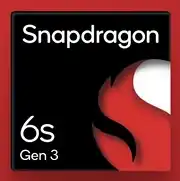Qualcomm Snapdragon 6 Gen 1

Qualcomm Snapdragon 6 Gen 1: A Balance of Performance and Affordability in 2025
A Review of the Mobile Processor for Mid-Range Smartphones
Introduction
In the world of mobile technology in 2025, Qualcomm continues to maintain its leadership in the smartphone processor segment. The Snapdragon 6 Gen 1, introduced at the end of 2023, remains a relevant solution for devices priced between $300 and $450. This chip combines a modern manufacturing process, 5G support, and optimized performance. Let's explore what sets it apart from competitors and who it is suitable for.
1. Architecture and Manufacturing Process: Innovations in a Compact Package
The Snapdragon 6 Gen 1 is built on a 4nm manufacturing process, ensuring high energy efficiency. Its 8-core Kryo architecture includes:
- 2 high-performance Cortex-A78 cores with a frequency of up to 2.2 GHz for resource-intensive tasks.
- 6 energy-efficient Cortex-A55 cores at 1.8 GHz, responsible for background processes.
The graphics subsystem, Adreno 710, supports API Vulkan 1.3 and OpenGL ES 3.2, enabling mobile gaming at medium settings. The Elite Gaming technology improves FPS stability and reduces lag.
Key Features:
- Support for LPDDR5 memory up to 16 GB (2750 MHz).
- UFS 3.1 storage for quick application loading.
- Elimination of "lag" through thermal design optimization.
2. Performance in Real-Life Tasks: From Gaming to AI
Gaming:
- Genshin Impact runs at medium settings (30–40 FPS), while Call of Duty: Mobile runs at high settings (60 FPS).
- The Adreno 710 handles Full HD+ rendering but lacks the power for 1440p gaming.
Multimedia:
- The chip decodes 4K@60fps video (HDR10+).
- Support for displays with a 120 Hz refresh rate for smooth scrolling.
AI Applications:
- The 7th generation AI engine Hexagon accelerates photo processing (night mode, scene recognition) and voice assistants (e.g., Google Assistant).
- Power consumption in AI photography mode is 15% lower than that of the Snapdragon 695.
Heat and Battery:
- Under active use (gaming, streaming), the temperature does not exceed 42°C.
- In smartphones with a 5000 mAh battery, the screen time can reach up to 8 hours.
3. Built-in Modules: Communication of the Future
- Snapdragon X62 5G Modem: Speeds up to 4.4 Gbit/s (mmWave + sub-6 GHz), compatible with 4G LTE Cat 24 networks.
- Wi-Fi 6E and Bluetooth 5.3: Seamless connectivity to routers supporting 6 GHz, audio streaming in aptX Lossless codec.
- Navigation: GPS, GLONASS, Galileo + support for satellite systems for improved accuracy in mountains/cities.
Note: The chip does not support satellite communication for emergency calls like the Snapdragon 8 Gen 3.
4. Comparison with Competitors: Who Leads?
- MediaTek Dimensity 7050: Better graphics (Mali-G68 MC4) but higher heat. AnTuTu ~610K.
- Exynos 1380: Similar CPU performance (Geekbench 6 Multi: 2800) but weaker game optimization.
- Snapdragon 6 Gen 1 vs. Previous Generations:
- 25% faster than Snapdragon 695 in AnTuTu tests.
- 18% lower power consumption thanks to the 4nm manufacturing process.
Conclusion: Snapdragon 6 Gen 1 excels in balance and stability but lags behind some competitors in GPU performance.
5. Use Cases: Who Is It Made For?
- Gaming: Suitable for casual games (Angry Birds, Among Us) and mid-settings in AAA titles.
- Daily Tasks: Social media, streaming, multitasking (simultaneous operation of 10+ apps).
- Photography/Video: Cameras up to 108 MP, recording at 4K@30fps, AI stabilization. Examples of devices: Xiaomi Redmi Note 14 Pro, Motorola Moto G Power 2025.
6. Pros and Cons of the Processor
Pros:
- 4nm energy efficiency.
- Support for 5G and Wi-Fi 6E.
- Affordable smartphone pricing ($300–450).
Cons:
- Adreno 710 graphics are weaker than Mali-G78.
- No hardware ray tracing for gaming.
7. Practical Tips: How to Choose a Smartphone?
- RAM/Storage: Minimum 8/128 GB for gaming.
- Cooling: Look for models with vapor chamber cooling (e.g., Poco X6 Neo).
- Display: AMOLED screen with a refresh rate of 90–120 Hz for smoothness.
- Camera: Sony IMX766 or Samsung ISOCELL GW3 sensors will unlock the potential of AI processing.
Tip: Devices using Snapdragon 6 Gen 1 are often chosen for travel due to their reliable GPS and battery life.
8. Final Conclusion: Who Is Snapdragon 6 Gen 1 Suitable For?
This processor is the ideal choice for:
- Budget gamers who do not require ultra settings.
- Students and active users who value battery life.
- Travelers who need a stable connection.
Key Benefits: Price-to-performance ratio, readiness for the 5G future, smooth multitasking performance.
Conclusion
The Snapdragon 6 Gen 1 proves that premium-class technology is gradually transitioning into the mid-range segment. If you're looking for a smartphone that will last "for three years" without overpaying for a top chip — this processor is a reliable companion.
Basic
4x 1.8 GHz – Cortex-A55
GPU Specifications
Connectivity
Memory Specifications
Miscellaneous
Benchmarks
Phones with Snapdragon 6 Gen 1
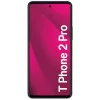


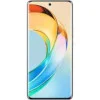

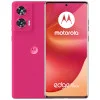

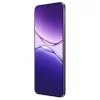
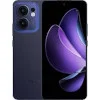


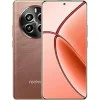
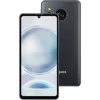





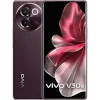
Tablets with Snapdragon 6 Gen 1


Comparison of Devices with Snapdragon 6 Gen 1
Compared to Other SoC
Related SoC Comparisons
Share in social media
Or Link To Us
<a href="https://cputronic.com/en/soc/qualcomm-snapdragon-6-gen-1" target="_blank">Qualcomm Snapdragon 6 Gen 1</a>



